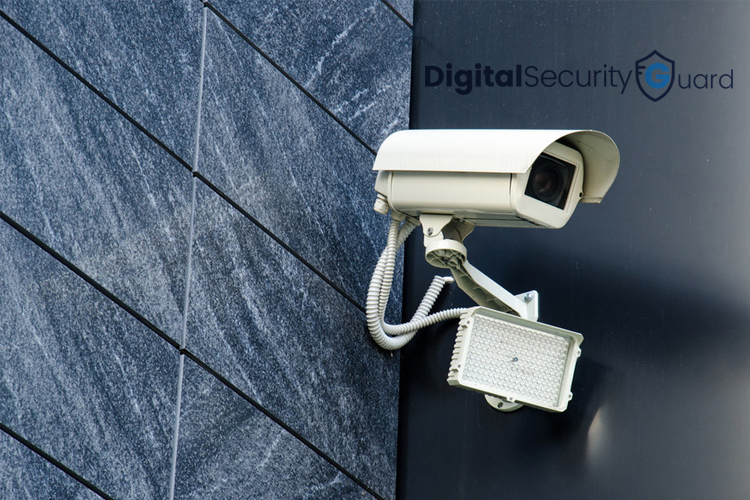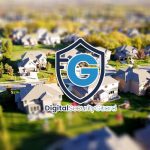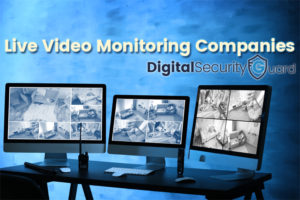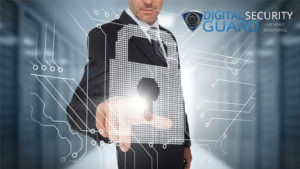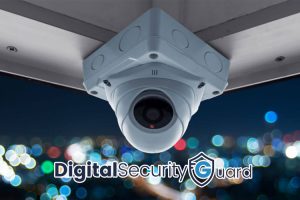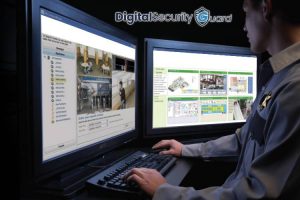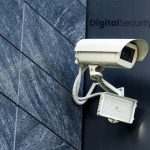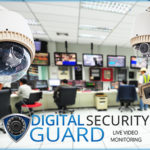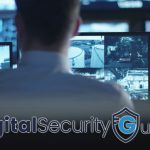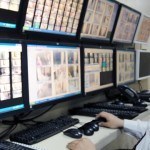You’ve seen the cameras. You understand they connect to the internet. But what actually happens when someone tries to break into your property at 2 AM on a Tuesday?
Understanding how virtual security guards work reveals why they’re replacing traditional security personnel across industries—from apartment complexes and construction sites to hospitals and retail stores. The technology combines HD surveillance cameras, artificial intelligence analytics, and licensed security professionals into an integrated system that provides continuous protection without human limitations.
Virtual security guards monitor your property 24/7/365 from remote command centers. When suspicious activity occurs, trained security professionals assess the situation in real-time, intervene through two-way audio warnings, and coordinate immediate law enforcement response with video evidence. Unlike passive camera systems that merely record crimes, virtual guards actively prevent them.
This comprehensive guide explains exactly how virtual security guards work—from the equipment on your property to the command center operations to the emergency response protocols. Whether you’re evaluating security options for your business or simply curious about the technology, you’ll understand why virtual guards deliver superior protection at dramatically lower costs than traditional security methods.
The Virtual Security Guard Process: Detection to Resolution
STEP 1: THREAT DETECTION
↓
[AI Analytics monitors all cameras 24/7]
↓
Motion/Activity detected
↓
System classifies: Person | Vehicle | Object
↓
Alert generated for human review
↓
━━━━━━━━━━━━━━━━━━━━━━━━━━━━━━━━━
STEP 2: HUMAN ASSESSMENT (5-15 seconds)
↓
[Security Professional Reviews Live Feed]
↓
Is this legitimate activity? → YES → Log and monitor
↓ NO
Threat level assessment
↓
━━━━━━━━━━━━━━━━━━━━━━━━━━━━━━━━━
STEP 3: IMMEDIATE INTERVENTION (15-30 seconds)
↓
LOW THREAT → Continue monitoring + document
↓
MODERATE THREAT → Two-way audio warning
"Security. You are being recorded. Leave immediately."
↓
HIGH THREAT → Audio warning + Police notification
↓
EMERGENCY → Immediate 911 + Video stream to police
↓
━━━━━━━━━━━━━━━━━━━━━━━━━━━━━━━━━
STEP 4: RESPONSE COORDINATION
↓
Monitor subject response
↓
Provide real-time updates to law enforcement
↓
Track suspect movements
↓
Guide responding officers to exact location
↓
━━━━━━━━━━━━━━━━━━━━━━━━━━━━━━━━━
STEP 5: DOCUMENTATION & FOLLOW-UP
↓
[Automatic incident report generated]
↓
• Timestamp and location
• Video evidence attached
• License plates captured
• Actions taken logged
• Outcome documented
↓
Report sent to property manager
Average Response Time: Detection to intervention in 15-45 seconds
Success Rate: 67% of threats deterred before crime completion
The Core Components of Virtual Security Guard Systems
HD Camera Infrastructure
The foundation of virtual security guard services is professional-grade HD camera systems—not consumer products from hardware stores. These specialized cameras provide:
4K Resolution Imaging
Ultra-high-definition cameras capture faces, license plates, and identifying details from significant distances. Even in challenging conditions, security professionals can see critical details that inform their response decisions.
Low-Light and Night Vision
Infrared illuminators and starlight sensors enable clear imaging in complete darkness. Properties receive equal protection during overnight hours when most crimes occur.
Weather-Resistant Housings
Industrial-rated enclosures protect cameras from rain, snow, extreme temperatures, and tampering. Systems operate reliably in conditions from -40°F to 140°F.
Pan-Tilt-Zoom (PTZ) Capabilities
Remote-controlled cameras adjust viewing angles on command. Security professionals zoom in on suspicious activity, follow moving subjects, or scan large areas without physical presence.
Wide Dynamic Range
Advanced sensors handle challenging lighting conditions—bright sunlight next to deep shadows, headlight glare, or backlit subjects. Cameras maintain clear images where consumer products fail.
Network Video Recorders (NVRs)
Network video recorders serve as the central hub for camera systems. These specialized computers:
- Record high-definition video from multiple cameras simultaneously
- Store 30-90 days of footage depending on system configuration
- Compress video files efficiently to manage storage requirements
- Provide redundant storage protection against drive failures
- Enable quick video retrieval for investigations or evidence
Modern NVRs use enterprise-grade hardware—not consumer PCs—ensuring reliability for critical security applications.
Two-Way Audio Systems
Virtual security guards need to communicate with people on your property. Professional audio intercoms provide:
Crystal-Clear Voice Quality
Industrial speakers and noise-canceling microphones enable clear communication in noisy environments. Security professionals speak with authority, and people on-site understand every word.
Weatherproof Construction
Audio systems withstand rain, wind, temperature extremes, and physical abuse. They function reliably whether installed at outdoor gates or interior facility checkpoints.
Immediate Response Capability
Security guards activate audio within seconds of detecting suspicious activity. Verbal warnings from monitoring professionals deter most crimes before they occur.
According to research from the <a href=”https://www.securitymagazine.com/” target=”_blank” rel=”nofollow”>Security Magazine</a>, properties with two-way audio systems experience 67% fewer completed crimes compared to silent surveillance systems. Criminals flee when they realize someone is actively watching and communicating.
Access Control Integration
Virtual security guard systems coordinate with your existing security infrastructure:
Electronic Gates and Barriers
Guards remotely open gates for authorized vehicles while denying access to unauthorized visitors. Real-time control prevents tailgating and unauthorized entry.
Smart Lock Systems
Integration with electronic door locks allows guards to grant or deny building access based on live assessment of who’s requesting entry.
Alarm System Coordination
Security guards receive alarm notifications directly and can verify whether alerts represent real threats or false alarms before notifying law enforcement.
Visitor Management
Digital visitor logs track who enters and exits your property. Guards verify identities against pre-registered guest lists, streamlining legitimate visits while blocking unauthorized access.
AI-Powered Analytics
Artificial intelligence enhances human security professionals by:
Motion Detection
Advanced algorithms distinguish between actual threats (people, vehicles) and false alarms (animals, weather, shadows). Guards receive alerts only for genuine security events.
Object Classification
AI identifies what triggered an alert—person, vehicle, package, or animal. This information helps guards assess threat levels and appropriate responses.
Behavior Analysis
Machine learning recognizes unusual patterns like loitering, fence climbing, or vehicles casing properties. Early detection enables intervention before crimes occur.
License Plate Recognition
Automatic plate reading creates searchable databases of vehicles accessing your property. Guards instantly identify known threats or verify authorized vehicles.
Facial Recognition (Optional)
When privacy regulations permit, facial recognition can identify known threats, employees, or VIP visitors, streamlining access control while enhancing security.
How the Monitoring Process Works
Initial Site Setup and Configuration
Before monitoring begins, security consultants work with you to:
Identify Critical Coverage Areas
Which entrances, parking areas, or asset locations require monitoring? Where do crimes typically occur? What are your highest-risk vulnerabilities?
Design Camera Placement Strategy
Professional installers position cameras for optimal coverage, considering sight lines, lighting conditions, and elimination of blind spots.
Establish Response Protocols
What should guards do when they detect specific types of incidents? Who should they contact? What are your escalation procedures?
Create Access Control Rules
Who’s authorized to enter? How should guards verify identity? What visitor management processes should they follow?
Configure AI Analytics Parameters
What events should trigger alerts? How sensitive should motion detection be? What behaviors should the system flag as suspicious?
This upfront planning ensures monitoring services align precisely with your security needs and operational requirements.
Real-Time Monitoring Operations
Once configured, here’s how virtual security guards protect your property every hour of every day:
Continuous Video Surveillance
Security professionals monitor live camera feeds from your property along with dozens of other client sites. Each guard has multiple monitors displaying different locations simultaneously.
AI-Assisted Alert Generation
Artificial intelligence continuously analyzes video streams. When it detects potential security events—motion in restricted areas, vehicles in unauthorized zones, people approaching after hours—it generates alerts for human review.
Human Assessment and Decision Making
Licensed security professionals immediately review AI-generated alerts. They assess whether activity represents a genuine threat or false alarm. Human judgment determines appropriate responses.
Multi-Level Response Protocols
Based on threat assessment, guards follow established protocols:
- Level 1 (Low threat): Document activity, continue monitoring
- Level 2 (Moderate concern): Issue verbal warning via two-way audio
- Level 3 (Serious threat): Contact law enforcement with video evidence
- Level 4 (Emergency): Coordinate immediate emergency response
Continuous Documentation
All activities, alerts, and responses are automatically logged with timestamps and video evidence. This documentation supports investigations, legal proceedings, or insurance claims.
How Threat Detection Works
Let’s walk through a typical security event from detection to resolution:
11:47 PM – AI Detects Motion
A vehicle enters your construction site parking area after hours. AI analytics detect motion and classify the object as a vehicle. The system generates an alert for human review.
11:47 PM – Guard Reviews Alert (5 seconds)
Security professional immediately sees the alert on their monitoring station. They review live camera feed showing the vehicle and assess the situation.
11:48 PM – Initial Assessment (10 seconds)
Guard determines this is an unauthorized vehicle in a restricted area after business hours. No legitimate reason for presence. Escalating to Level 2 response.
11:48 PM – Verbal Warning Issued (15 seconds)
Guard activates two-way audio: “Security to the vehicle in Lot B. This is private property. You are being recorded. Please leave immediately or police will be notified.”
11:48 PM – Subject Response Monitored (30 seconds)
Guard watches for subject’s reaction. Vehicle begins backing out. Subject appears to be leaving.
11:49 PM – Follow-Up Assessment (30 seconds)
Guard continues monitoring to ensure vehicle fully exits property. License plate captured and logged. Vehicle leaves without incident.
11:49 PM – Documentation (45 seconds)
Guard completes incident report noting time, location, vehicle description, license plate, actions taken, and outcome. Video clip saved for future reference.
Total Response Time: 2 minutes from initial detection to incident resolution.
Outcome: Potential theft or vandalism prevented through immediate intervention. No property damage. No police resources required.
Compare this to passive camera systems that merely record the crime, or traditional security guards who might not have noticed the vehicle if they were checking another area, on break, or focused on their smartphone.
Emergency Response Coordination
When serious threats occur, virtual security guards coordinate immediate response:
Law Enforcement Notification
Guards contact 911 or non-emergency police lines depending on threat severity. They provide:
- Exact property location and entry points
- Detailed description of suspects and vehicles
- Nature of crime in progress
- Real-time updates on suspect movements
- Video evidence available for responding officers
On-Site Personnel Coordination
If you have employees or staff on property, guards can contact them directly to:
- Issue safety warnings and evacuation instructions
- Direct them to secure locations
- Confirm their safety status
- Coordinate with emergency responders
Video Evidence Provision
Guards can live-stream video feeds to responding officers’ mobile devices or provide immediate video clip transfers showing the incident. This evidence significantly improves law enforcement effectiveness.
Research from the <a href=”https://bja.ojp.gov/” target=”_blank” rel=”nofollow”>Bureau of Justice Assistance</a> shows police response times improve by 40% when dispatchers receive real-time video evidence and suspect descriptions from security professionals rather than after-the-fact reports from victims.
Virtual Security Guards vs. Traditional Security Methods
Comparison: Virtual Guards vs. Traditional Guards
Coverage and Attention:
Traditional guards can monitor one area at a time. Studies show guard attentiveness drops by 60% after the first hour on duty. Guards take breaks, use smartphones, or become distracted by routine.
Virtual security guards simultaneously monitor multiple cameras across your entire property. Fresh security professionals rotate monitoring duties every 2-4 hours, maintaining peak alertness. When AI alerts flag unusual activity, guards provide focused attention immediately.
Response Capabilities:
Traditional guards must physically walk or drive to investigate incidents, taking 3-10 minutes depending on property size. By the time they arrive, suspects often flee or complete crimes.
Virtual security guards assess threats instantly through HD cameras. They intervene within 15-30 seconds via two-way audio and coordinate law enforcement response with precise information. This speed prevents most crimes rather than merely documenting them.
Documentation Quality:
Traditional guards write incident reports from memory, often hours after events occur. Reports vary in quality and detail depending on individual guard capabilities.
Virtual security guards create automatically timestamped records with attached video evidence for every security event. Documentation is comprehensive, objective, and court-admissible.
Cost Structure:
Traditional guards cost $35,000-45,000 annually per position plus benefits. Providing 24/7 coverage requires 3-4 guards ($120,000-180,000/year) with no coverage during shift changes, breaks, or call-outs.
Virtual security guard monitoring typically costs $800-1,500/month ($9,600-18,000/year) with continuous coverage and no gaps. After initial equipment installation ($15,000-30,000), annual costs represent 85-90% savings versus traditional guards.
Comparison: Virtual Guards vs. Passive Camera Systems
Many businesses install camera systems but don’t include professional monitoring. These passive systems have significant limitations:
Reactive vs. Proactive:
Passive cameras record crimes but don’t prevent them. You discover theft or vandalism only after it occurs. Reviewing footage and filing police reports happens too late to recover losses.
Virtual security guards actively prevent crimes through immediate intervention. Verbal warnings, police coordination, and real-time response stop most incidents before property damage or loss occurs.
No Response Capability:
Passive systems cannot communicate with intruders, contact authorities, or take action during security events. They’re witnesses, not security providers.
Virtual security guards combine observation with action. They issue warnings, contact police with detailed information, coordinate emergency response, and guide law enforcement to exact incident locations.
False Sense of Security:
Passive cameras make people feel protected without providing meaningful security. Criminals recognize unmonitored cameras and proceed with crimes, knowing nobody will respond until it’s too late.
Virtual security guards’ visible warning signs indicate active professional monitoring. Criminals recognize the high risk of immediate police response and choose easier targets.
According to research published in the <a href=”https://www.urban.org/policy-centers/justice-policy-center” target=”_blank” rel=”nofollow”>Urban Institute</a> Journal of Experimental Criminology, monitored surveillance systems reduce property crimes by 50-60% compared to 15-20% reduction from passive cameras alone.
Industry-Specific Applications
Construction Sites
Construction sites face unique security challenges—remote locations, no permanent infrastructure, valuable equipment, and constantly changing layouts. Here’s how virtual security guards adapt:
Mobile Monitoring Units: Self-contained camera systems with solar power and cellular connectivity deploy anywhere. Guards monitor remote sites without requiring traditional infrastructure.
Equipment Tracking: AI-powered analytics monitor when equipment moves. Guards receive alerts if machinery operates outside authorized hours or moves toward exit points.
Worker Safety Monitoring: Guards can observe safety compliance and coordinate emergency response if accidents occur in remote locations.
Adaptive Coverage: As construction progresses and site layouts change, guards adjust monitoring focus to protect new high-value areas or completed sections.
Healthcare Facilities
Hospitals and medical centers operate 24/7 with multiple entry points, valuable pharmaceuticals, and diverse personnel. Virtual security guards provide:
Emergency Department Monitoring: Guards watch high-risk areas where violent incidents occur, coordinating immediate response to de-escalate situations or summon help for staff.
Pharmaceutical Security: Monitoring storage areas and dispensing locations helps prevent drug diversion while documenting compliance with regulatory requirements.
Parking Lot Protection: Guards monitor parking areas where healthcare workers often finish shifts late at night, providing escort coordination if requested.
Visitor Management: Guards screen visitors during off-hours, ensuring only authorized individuals access patient care areas.
Retail Locations
Retail stores battle organized retail crime, shoplifting, and employee theft. Virtual security guards address these challenges:
Real-Time Theft Prevention: Guards observe sales floors and alert store personnel to suspicious behavior or organized retail crime groups, enabling intervention before theft occurs.
Point-of-Sale Monitoring: Watching cash register areas helps prevent employee theft and ensures proper cash handling procedures.
After-Hours Protection: Guards monitor empty stores overnight, detecting break-ins and coordinating police response immediately.
Parking Lot Security: Monitoring shopping center parking areas protects customers and prevents vehicle break-ins that create negative shopping experiences.
Apartment Communities
Multi-family residential properties need comprehensive security while respecting resident privacy. Virtual security guards provide:
Gate and Entry Monitoring: Guards screen visitors, manage deliveries, and control access to the community while residents maintain privacy within their units.
Common Area Protection: Monitoring pools, gyms, parking, and amenity spaces prevents unauthorized use and reduces liability from after-hours incidents.
Package Security: Guards direct delivery drivers to secure locations and monitor package areas to prevent theft.
Emergency Response: Guards coordinate with emergency services, providing exact unit locations and access instructions that speed response during medical emergencies or fires.
Common Questions About How Virtual Security Guards Work
“Can virtual guards see inside buildings?”
Camera placement respects privacy boundaries. Guards monitor entrances, parking areas, perimeters, and common spaces only. Interior areas like offices, hospital rooms, or residential units are never monitored unless you specifically request it for high-security storage areas.
All camera positions are disclosed during system design, and you maintain complete control over what areas receive coverage.
“What happens during internet outages?”
Modern systems include multiple redundancy layers:
Primary Broadband Connection: Main internet service provides primary connectivity.
Cellular Backup: Automatic failover to 4G/5G cellular connections maintains monitoring during internet disruptions.
Local Recording: Cameras continue recording to local storage even if remote connectivity fails temporarily.
Automatic Alert: Guards receive immediate notification if your system loses connectivity and technical support responds to restore service.
Most systems experience zero meaningful downtime. Brief interruptions are invisible to monitoring operations.
“How many properties does each guard monitor?”
Security professionals typically monitor 15-30 client properties simultaneously, depending on activity levels and service contracts. However, AI analytics ensure guards see only active security events, not hours of empty video.
When incidents occur at your property, guards provide focused attention immediately. Multiple guards in command centers ensure adequate staffing for simultaneous events across different client sites.
This shared monitoring model is how virtual security guards deliver dramatically lower costs while maintaining rapid response times.
“Can guards really prevent crimes?”
Law enforcement data consistently shows monitored surveillance with active intervention capabilities prevents significantly more crimes than passive recording systems. Research published by the <a href=”https://www.ncjrs.gov/” target=”_blank” rel=”nofollow”>National Criminal Justice Reference Service</a> found:
- Monitored systems reduce property crimes by 45-60%
- Passive cameras reduce crimes by only 15-20%
- Two-way audio intervention deters 67% of crimes before completion
Virtual security guards’ ability to issue immediate verbal warnings, activate alarms, and coordinate police response with detailed information creates genuine deterrence and prevention.
“What if guards miss something?”
Multiple safeguards prevent missed incidents:
AI Analytics: Artificial intelligence continuously analyzes every camera feed. When unusual activity occurs, it generates alerts for human review. Guards don’t rely on chance observation.
Multiple Monitors: Each guard station has multiple screens displaying different camera feeds and alert queues. Visual and audio alerts ensure guards notice flagged events.
Shift Overlap: Guard rotations include overlap periods where incoming and outgoing professionals brief each other on active situations.
Quality Assurance: Supervisors review guard performance, response times, and incident handling to ensure consistent service quality.
Video Recording: All footage is recorded and stored. Even if an incident isn’t flagged in real-time, video evidence exists for investigation and prosecution.
Getting Started with Virtual Security Guards
The Implementation Process
Free Security Assessment (Week 1):
Professional security consultants visit your property to:
- Identify security vulnerabilities and priority protection areas
- Evaluate existing infrastructure and systems
- Understand your specific security concerns and operational needs
- Design customized solutions matching your requirements and budget
Proposal and Planning (Week 2-3):
Receive detailed proposal including:
- Equipment specifications and camera placement diagrams
- Installation timeline and process
- Transparent pricing with no hidden fees
- Service level agreements and response protocols
Professional Installation (Week 3-5):
Certified technicians install and configure:
- HD cameras with optimal placement for complete coverage
- Network video recorders with appropriate storage capacity
- Two-way audio intercoms for guard communication
- Integration with existing access control and alarm systems
Testing and Training (Week 5-6):
Comprehensive system validation ensures:
- All cameras provide clear images day and night
- Two-way audio enables clear communication
- AI analytics generate appropriate alerts
- Guards can access all system functions
- Your staff understands how to coordinate with guards
Go-Live and Monitoring (Week 6+):
Virtual security guards begin 24/7 monitoring with:
- Initial period of enhanced attention to verify optimal configuration
- Regular communication to address questions or concerns
- Ongoing system optimization based on real-world performance
- Quarterly reviews to ensure continued service excellence
Most businesses transition from traditional security methods to virtual security guards in 4-6 weeks from initial contact to full operational status.
Take the Next Step
Now you understand how virtual security guards work—from the HD cameras and AI analytics at your property to the licensed security professionals in remote command centers to the immediate response protocols that prevent crimes.
The technology combines surveillance, artificial intelligence, and human expertise into a security solution that provides better protection at dramatically lower costs than traditional methods. Thousands of businesses across every industry have made the switch and experienced the benefits.
Get Your Free Security Assessment:
Digital Security Guard provides professional virtual security guard services nationwide. Our licensed security professionals monitor your property 24/7/365 through HD cameras, AI analytics, and two-way audio systems—delivering superior protection at 60-90% lower cost than traditional security guards.
What You’ll Receive:
- Comprehensive property security evaluation
- Customized system design for your specific needs
- Transparent pricing with no hidden fees
- ROI analysis showing your exact savings
- No-obligation proposal and consultation
Call (800) 829-7459 or request your free assessment online
Learn More About Virtual Security Solutions
Related Resources:
- Complete guide to virtual security guard services
- Virtual gate guard services for apartments
- Virtual security guard pricing and costs
- Security guard alternatives comparison
Connect With Us:
- Website: digitalsecurityguard.com
- Facebook: facebook.com/digitalsg
- Phone: (800) 829-7459
Digital Security Guard provides virtual security guard services nationwide, combining HD cameras, AI analytics, and licensed security professionals to deliver 24/7 protection at 60-90% lower cost than traditional security guards. Our monitoring professionals actively prevent crimes through immediate intervention, law enforcement coordination, and real-time response. Contact us at (800) 829-7459 to learn how virtual security guards work for your specific property and security needs.

